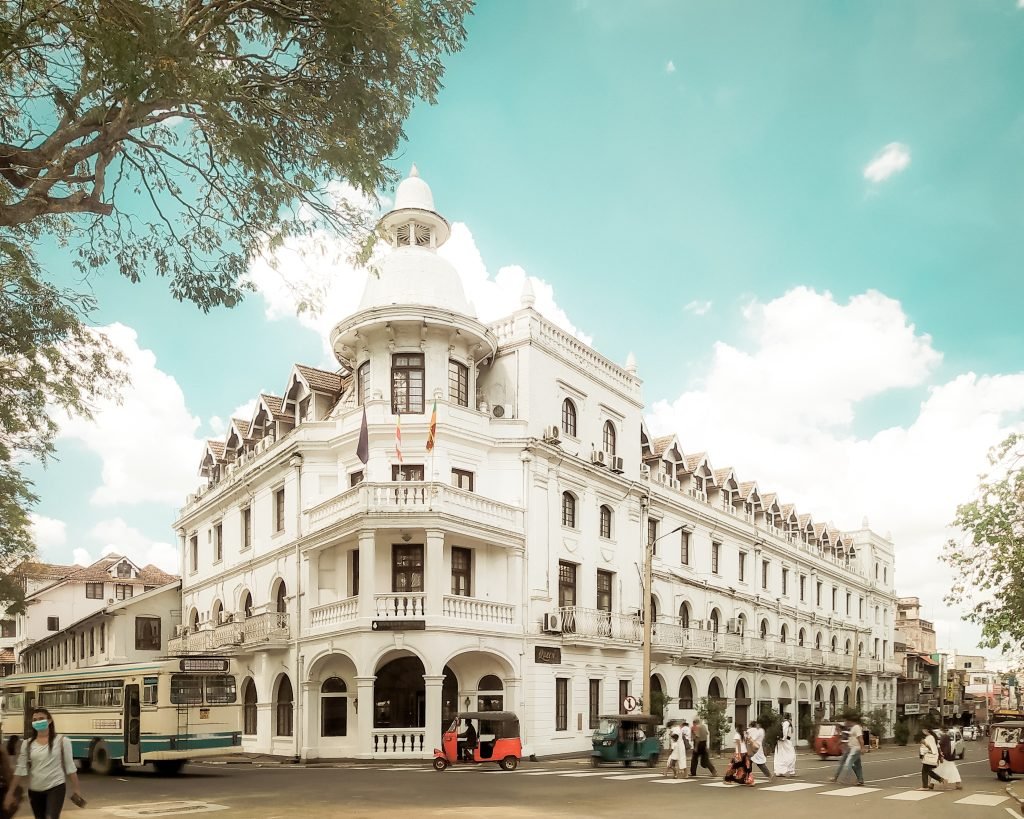
K A N D Y
This captivating destination provides visitors with a combination of vibrant culture, majestic historical sites, and a picturesque environment. As one of Sri Lanka’s most desirable and easily accessible locations, Kandy stands out as a prominent tourist attraction on the island.
Kandy was established as the royal capital of the island during the 15th century and held that status until the end of the 19th century, marking the conclusion of 2,500 years of royal rule. During its glorious days as a royal kingdom, the city transformed into a remarkable town adorned with palaces, temples, shrines, lakes, and gardens. Today, amidst the bustling market town, Kandy remains a spectacular city that offers travelers a wide range of attractions to discover.One of the main highlights in Kandy is the Temple of the Tooth and its surrounding structures. Set against the backdrop of the picturesque Kandy Lake, this temple houses the sacred tooth relic of Lord Buddha. Every year, in July and August, the city recreates its past splendor with a magnificent parade known as the Kandy Perehera. This grand procession features elephants, chiefs, drummers, and dancers, all parading the Tooth Relic in a golden casket.Exploring Kandy involves visiting various sites such as the 16th-century Temple of the Tooth, the compound of the Old Royal Palace, the temples of the Asgiriya and Malwatta Chapters, and Hindu shrines dedicated to Gods Vishnu, Natha, and Goddess Patthini. Outside the city, there are additional attractions to explore, including the 14th-century Gadaladeniya Temple, Embekke Temples, Lankathilaka Temple, and the Royal Botanical Gardens.Furthermore, Kandy serves as an ideal transit point for those interested in exploring the rest of the Cultural Triangle and the Hill Country areas. Convenient transportation options such as trains and buses are available from Colombo to reach Kandy, with a travel time of approximately three hours. Being centrally located, Kandy provides bus and train services to all the major cities in its vicinity.
Kandy was established as the royal capital of the island during the 15th century and held that status until the end of the 19th century, marking the conclusion of 2,500 years of royal rule. During its glorious days as a royal kingdom, the city transformed into a remarkable town adorned with palaces, temples, shrines, lakes, and gardens. Today, amidst the bustling market town, Kandy remains a spectacular city that offers travelers a wide range of attractions to discover.One of the main highlights in Kandy is the Temple of the Tooth and its surrounding structures. Set against the backdrop of the picturesque Kandy Lake, this temple houses the sacred tooth relic of Lord Buddha. Every year, in July and August, the city recreates its past splendor with a magnificent parade known as the Kandy Perehera. This grand procession features elephants, chiefs, drummers, and dancers, all parading the Tooth Relic in a golden casket.Exploring Kandy involves visiting various sites such as the 16th-century Temple of the Tooth, the compound of the Old Royal Palace, the temples of the Asgiriya and Malwatta Chapters, and Hindu shrines dedicated to Gods Vishnu, Natha, and Goddess Patthini. Outside the city, there are additional attractions to explore, including the 14th-century Gadaladeniya Temple, Embekke Temples, Lankathilaka Temple, and the Royal Botanical Gardens.Furthermore, Kandy serves as an ideal transit point for those interested in exploring the rest of the Cultural Triangle and the Hill Country areas. Convenient transportation options such as trains and buses are available from Colombo to reach Kandy, with a travel time of approximately three hours. Being centrally located, Kandy provides bus and train services to all the major cities in its vicinity.
S I G I R I Y A
Sigiriya, known as the Lion’s Rock, is an ancient fortress built around the 5th century BC. Situated in the central regions of Sri Lanka, specifically in the Matale District, this palace has been recognized by UNESCO as the 8th Wonder of the World.
Although the exact history of this fortress remains uncertain, it is believed to have been inhabited even during prehistoric times. According to the local chronicles of Mahavamsa, King Kashyapa constructed the fortress, along with its surrounding gardens, structures, and reservoirs, during the 5th century. However, there is evidence suggesting that it served as a monastery since the 5th century BC and was later repurposed by King Kashyapa during his reign, continuing to function as a monastery until the 14th century.
The most captivating feature of Sigiriya is its imposing rock fortress, which can be explored by ascending a precarious winding staircase. Along the way, visitors can marvel at the renowned frescoes, admire the mid-level terrace housing the Lion Gate, read the poetic inscriptions on the mirror wall dating back to the 8th century, and reach the upper level where remnants of the ancient Palace still display its former grandeur. The lower Palace and Gardens cover an extensive area, showcasing the ingenuity and creativity of the fortress’s designers and builders. When considering the overall layout of the site, Sigiriya is widely regarded as one of the most elaborate, original, and well-planned urban structures from the first millennium.
Although the exact history of this fortress remains uncertain, it is believed to have been inhabited even during prehistoric times. According to the local chronicles of Mahavamsa, King Kashyapa constructed the fortress, along with its surrounding gardens, structures, and reservoirs, during the 5th century. However, there is evidence suggesting that it served as a monastery since the 5th century BC and was later repurposed by King Kashyapa during his reign, continuing to function as a monastery until the 14th century.
The most captivating feature of Sigiriya is its imposing rock fortress, which can be explored by ascending a precarious winding staircase. Along the way, visitors can marvel at the renowned frescoes, admire the mid-level terrace housing the Lion Gate, read the poetic inscriptions on the mirror wall dating back to the 8th century, and reach the upper level where remnants of the ancient Palace still display its former grandeur. The lower Palace and Gardens cover an extensive area, showcasing the ingenuity and creativity of the fortress’s designers and builders. When considering the overall layout of the site, Sigiriya is widely regarded as one of the most elaborate, original, and well-planned urban structures from the first millennium.
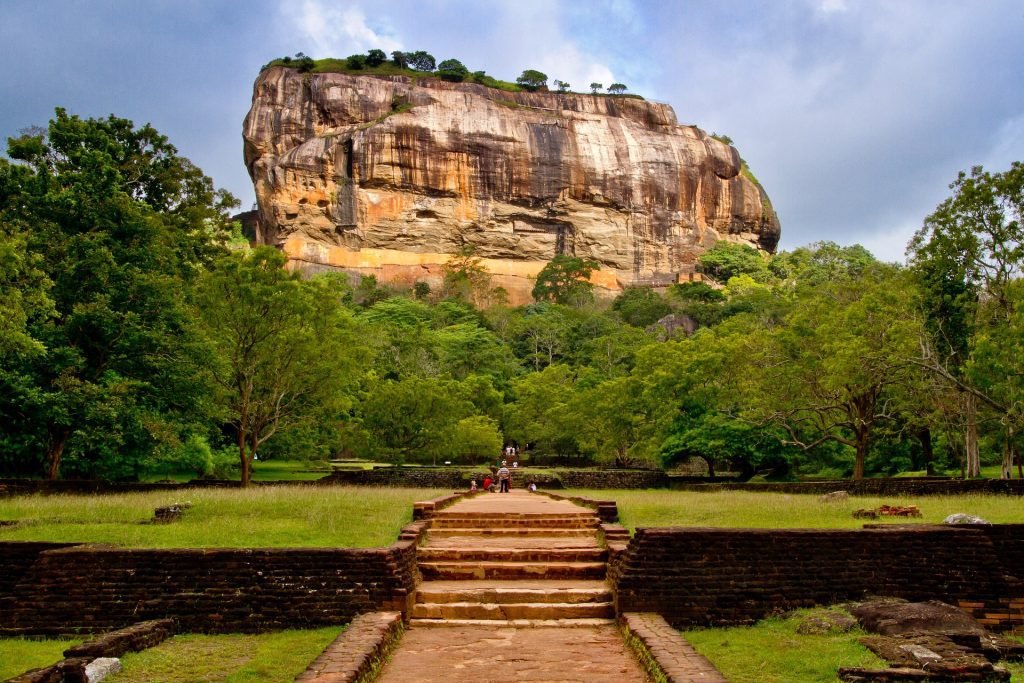
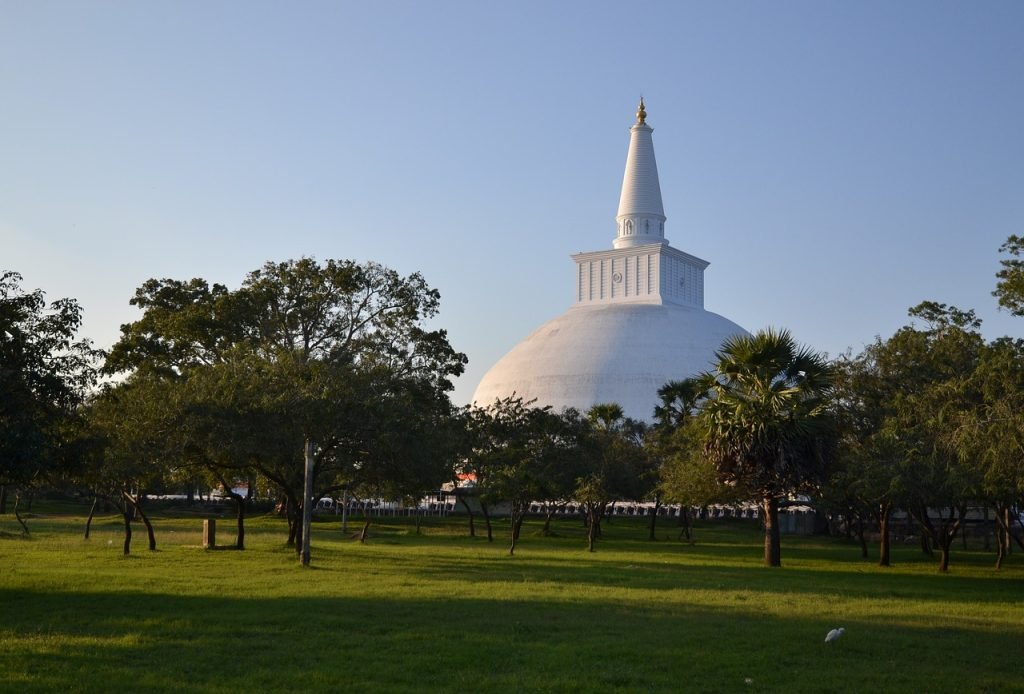
P O L O N N A R U W A
Polonnaruwa, the medieval capital of Sri Lanka, was established in the 11th century AD. During its glorious era, when the country was governed from Polonnaruwa, it stood out as one of the most culturally and technologically advanced cities in the world at that time.
Today, the main attraction in Polonnaruwa is the remains that showcase the city’s former grandeur. These ruins are situated on the eastern shores of a man-made lake, known locally as the Parakrama Samudraya, which dominates the city’s landscape and resembles an expansive ocean. The primary city is in ruins within a rectangular complex, while other fascinating structures from the Polonnaruwa era can be found outside this complex.
Visitors exploring the ruins will come across notable sights such as a 3.5-meter-tall rock-carved statue of a man holding ola leaf manuscripts, the royal citadel protected by impressively wide ramparts, the remnants of the Palace of the renowned King Parakramabahu, ancient irrigation systems, intricately carved pillars, and moonstones. Other significant relics include the Potgul Vehera, which served as an auditorium and library for sacred books, the two Hindu temples known as Siva Devale dedicated to the deity Shiva, the vaulted shrine called Thuparama, the elegantly ornate relic house called Vatagade, the Nissanka Lata Mandapaya showcasing the splendor of classical arts and architecture, the seven-storied Satmahal Prasada, the temples housing the Sacred Tooth relics, namely Hatadage and Atadage, the towering Lankatileke, which is one of the most impressive Buddhist shrines from the 12th century, and the magnificent Gal Vihare featuring awe-inspiring Buddha statues carved into the rock.
Today, the main attraction in Polonnaruwa is the remains that showcase the city’s former grandeur. These ruins are situated on the eastern shores of a man-made lake, known locally as the Parakrama Samudraya, which dominates the city’s landscape and resembles an expansive ocean. The primary city is in ruins within a rectangular complex, while other fascinating structures from the Polonnaruwa era can be found outside this complex.
Visitors exploring the ruins will come across notable sights such as a 3.5-meter-tall rock-carved statue of a man holding ola leaf manuscripts, the royal citadel protected by impressively wide ramparts, the remnants of the Palace of the renowned King Parakramabahu, ancient irrigation systems, intricately carved pillars, and moonstones. Other significant relics include the Potgul Vehera, which served as an auditorium and library for sacred books, the two Hindu temples known as Siva Devale dedicated to the deity Shiva, the vaulted shrine called Thuparama, the elegantly ornate relic house called Vatagade, the Nissanka Lata Mandapaya showcasing the splendor of classical arts and architecture, the seven-storied Satmahal Prasada, the temples housing the Sacred Tooth relics, namely Hatadage and Atadage, the towering Lankatileke, which is one of the most impressive Buddhist shrines from the 12th century, and the magnificent Gal Vihare featuring awe-inspiring Buddha statues carved into the rock.
Y A P A H U W A
Yapahuwa, often overshadowed by the more prominent historic capitals of Anuradhapura and Polonnaruwa, is a place that perfectly showcases Sri Lanka’s rich cultural heritage.
Situated between Kurunegala and Anuradhapura, Yapahuwa shares similarities with Sigiriya as it was also constructed on a rock formation, albeit at a lower elevation. It served as the capital of Sri Lanka for a relatively short period compared to the other ancient capitals. Yapahuwa served the dual purpose of being a palace and a fortress, with indications that it may have also functioned as a Buddhist monastery. Although limited information is available about Yapahuwa, excavations reveal close diplomatic relations with China during that time.
Exploring the ruins of Yapahuwa allows you to appreciate the remarkable ancient architecture. The intricately designed carvings and stonework, including an ornamental stairway, will leave you in awe of the craftsmanship. For a more in-depth understanding and to see additional artifacts, you can visit the museum located at the entrance of the site. In Yapahuwa, there are several hotels available to ensure a comfortable stay in this ancient capital city.
Situated between Kurunegala and Anuradhapura, Yapahuwa shares similarities with Sigiriya as it was also constructed on a rock formation, albeit at a lower elevation. It served as the capital of Sri Lanka for a relatively short period compared to the other ancient capitals. Yapahuwa served the dual purpose of being a palace and a fortress, with indications that it may have also functioned as a Buddhist monastery. Although limited information is available about Yapahuwa, excavations reveal close diplomatic relations with China during that time.
Exploring the ruins of Yapahuwa allows you to appreciate the remarkable ancient architecture. The intricately designed carvings and stonework, including an ornamental stairway, will leave you in awe of the craftsmanship. For a more in-depth understanding and to see additional artifacts, you can visit the museum located at the entrance of the site. In Yapahuwa, there are several hotels available to ensure a comfortable stay in this ancient capital city.
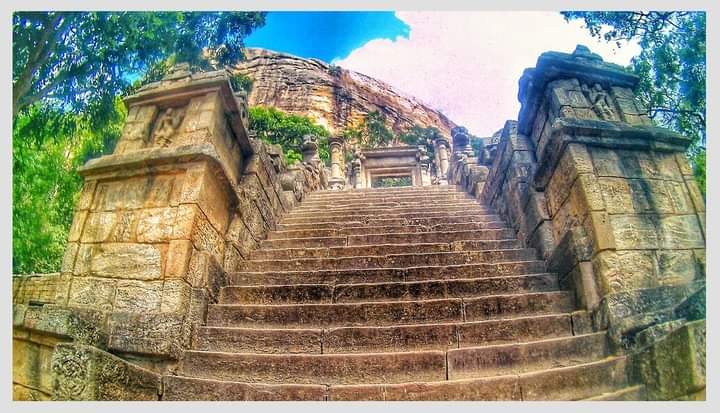
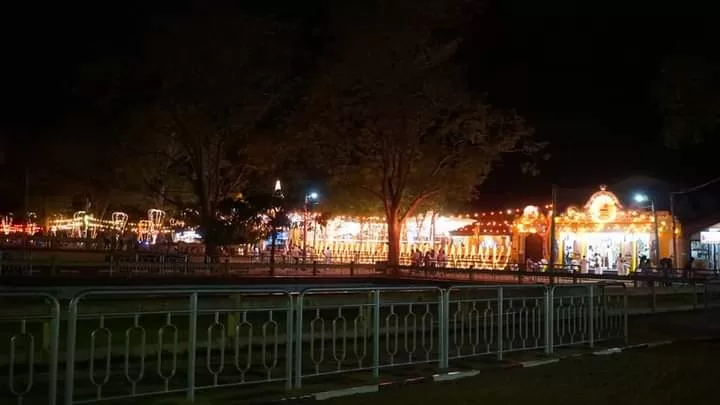
K A T H A R A G A M A
Kataragama, situated in the southeastern region of Sri Lanka, is a renowned pilgrimage town among Buddhists, Hindus, Muslims, and the indigenous communities. The primary attraction of this town is the Ruhunu Maha Kataragam Devalaya, a shrine dedicated to Skanda-Murukan, also known as Kataragama Deviyo.
Although Kataragama was a small town during medieval times, the shrine, which dates back to the 2nd century BC, has consistently drawn devotees throughout the centuries. The main event at this shrine is the vibrant annual procession. Taking place in July and August, the procession features captivating “Kawadi” dancers and fearless fire walkers.
The town is also renowned for the impressive and stunning Buddhist Stupa known as “Kirir Vehera,” which has its origins in the late BC centuries. Additionally, Kataragama held significance as a prominent city during the Ruhuna Kingdom. Today, Kataragama has transformed into a well-developed holiday destination, offering a variety of accommodation options. It also serves as a popular stopover for those visiting the nearby Yala National Park.
Although Kataragama was a small town during medieval times, the shrine, which dates back to the 2nd century BC, has consistently drawn devotees throughout the centuries. The main event at this shrine is the vibrant annual procession. Taking place in July and August, the procession features captivating “Kawadi” dancers and fearless fire walkers.
The town is also renowned for the impressive and stunning Buddhist Stupa known as “Kirir Vehera,” which has its origins in the late BC centuries. Additionally, Kataragama held significance as a prominent city during the Ruhuna Kingdom. Today, Kataragama has transformed into a well-developed holiday destination, offering a variety of accommodation options. It also serves as a popular stopover for those visiting the nearby Yala National Park.
D A M B U L L A
Dambulla, situated in the Matale District of the Central Province, is primarily known for its rich historical and cultural heritage. The main highlight of Dambulla is its complex of caves and the ancient temple constructed within these caves, which bear witness to a history and inhabitants dating back as far as the 7th to the 3rd century BC.
The caves are adorned with captivating cave paintings and statues, showcasing the evolution of Sri Lankan art and the profound influence of Buddhism on the local culture. The Temple area encompasses more than 80 caves, many of which have been utilized by monks for meditation purposes over the centuries. The primary Temple is situated within approximately 5 caves and features magnificent murals and intricately designed monuments.
In addition to the caves and temple, Dambulla offers other attractions worth exploring. These include the Rose Quartz Mountain, a geological wonder that originated around 500 million years ago, and the Iron Wood Forest, one of the oldest forests in Sri Lanka.
The caves are adorned with captivating cave paintings and statues, showcasing the evolution of Sri Lankan art and the profound influence of Buddhism on the local culture. The Temple area encompasses more than 80 caves, many of which have been utilized by monks for meditation purposes over the centuries. The primary Temple is situated within approximately 5 caves and features magnificent murals and intricately designed monuments.
In addition to the caves and temple, Dambulla offers other attractions worth exploring. These include the Rose Quartz Mountain, a geological wonder that originated around 500 million years ago, and the Iron Wood Forest, one of the oldest forests in Sri Lanka.
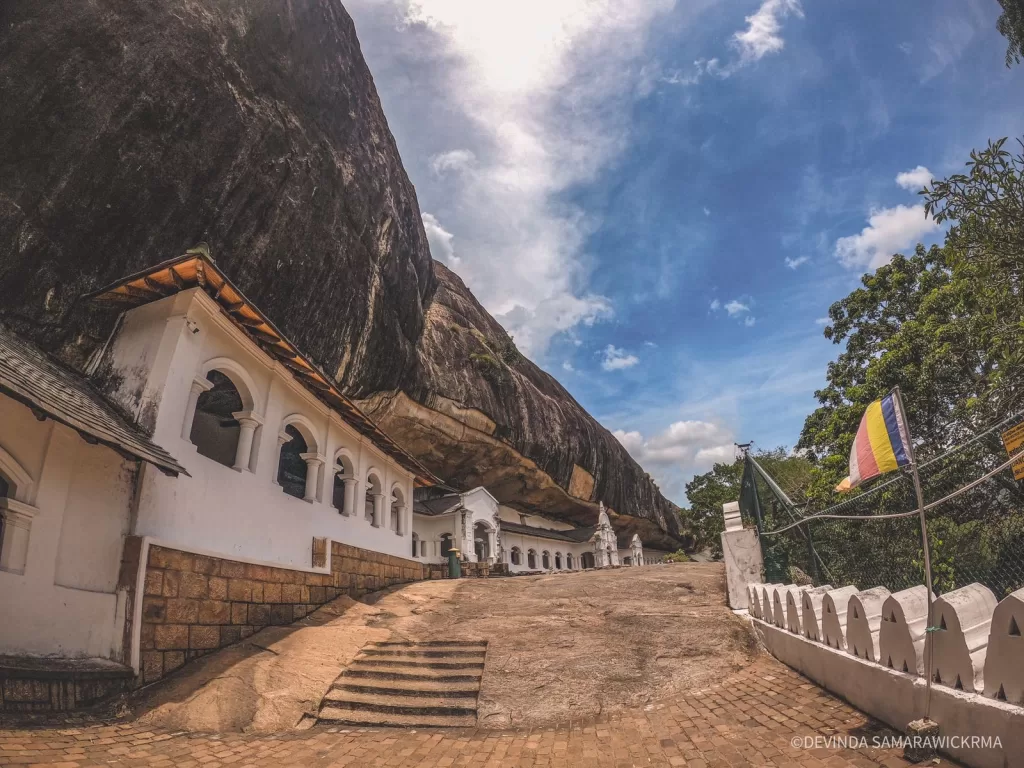
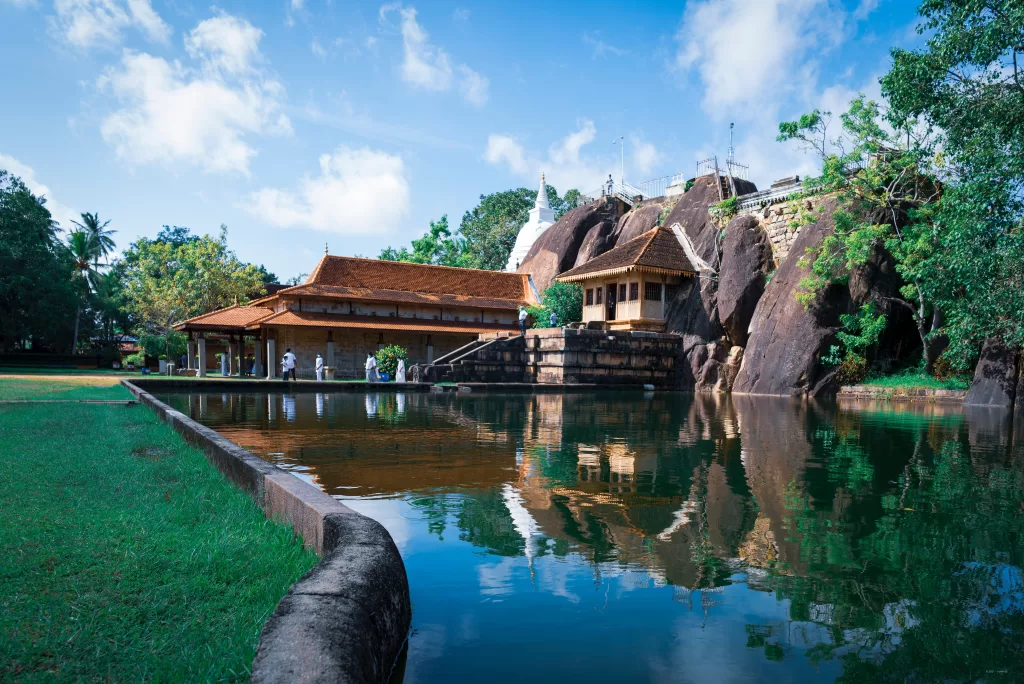
A N U R A D H A P U R A
Anuradhapura, the sacred city, held the position of Sri Lanka’s capital for 1300 years, starting from the 3rd century BC. Renowned for its thriving civilization, rich culture, and impressive irrigation system, Anuradhapura is considered one of the most remarkable ancient civilizations in the world.
Presently, Anuradhapura stands as picturesque ruins, accompanied by a smaller, more commercialized town situated nearby. Exploring the old city of Anuradhapura allows visitors to delve into captivating ruins that include ancient cities, majestic colossal stupas, temples, intricate carvings, palaces, and remnants of the ancient irrigation system. Many of these stupas continue to be revered by Buddhists worldwide, and convenient roads provide easy access to visit these magnificent monuments. The area housing the grand stupas is complemented by a massive and breathtakingly beautiful reservoir.
Presently, Anuradhapura stands as picturesque ruins, accompanied by a smaller, more commercialized town situated nearby. Exploring the old city of Anuradhapura allows visitors to delve into captivating ruins that include ancient cities, majestic colossal stupas, temples, intricate carvings, palaces, and remnants of the ancient irrigation system. Many of these stupas continue to be revered by Buddhists worldwide, and convenient roads provide easy access to visit these magnificent monuments. The area housing the grand stupas is complemented by a massive and breathtakingly beautiful reservoir.

